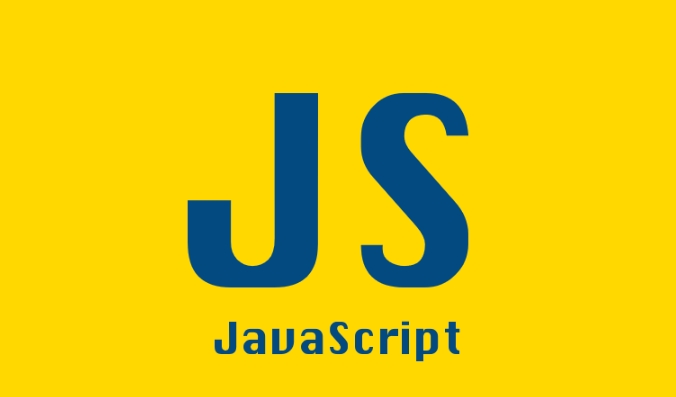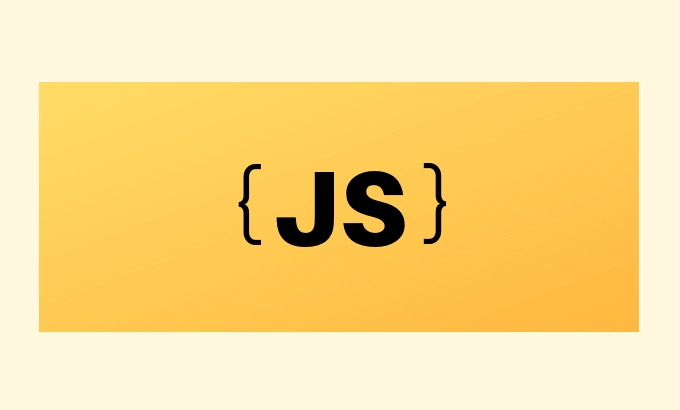JavaScript Service Workers for Offline Capabilities and Caching
Jul 18, 2025 am 03:42 AMService Workers is a key tool for implementing offline functions and caches of web pages. It runs in the browser background, is independent of the main thread, can intercept network requests and manage caches, and is the core technology for building PWA. 1. Service Worker is a background script that does not operate the DOM directly. It supports push notifications, background synchronization and other functions. It only runs in the HTTPS environment (except for the development environment). Its life cycle includes the registration, installation and activation stages. 2. To register a Service Worker, you need to call the register method in the main JS file, specify the script path and listen to the registration results. 3. Use the Cache API to cache critical resources during the installation phase and prioritize cached content in the fetch event. 4. To optimize offline experience, different caching strategies can be set, such as HTML adopts network priority, image adopts cache priority, and offline pages can be cached as a guarantee solution. 5. Cache strategies should be carefully designed when using them, avoid full cache or completely bypassing caches, and pay attention to version management and cache cleaning to prevent old caches from affecting debugging and updates.

Want your web page to be used when it is disconnected? Service Workers are a key tool for implementing offline functionality and caching. It is like a background proxy, allowing you to control page resource loading, cache policies, and even return cached content when there is no network.

Here are some practical points you may be concerned about:
What is Service Worker?
Service Worker is a script running in the browser background, independent of the main thread and does not operate the DOM directly. It can intercept network requests and manage caches, and is one of the core technologies for implementing PWA (progressive web application).

It has several characteristics:
- Support advanced functions such as push notifications, background synchronization, etc.
- Run only under HTTPS (except for development environments)
- Life cycle independent, requires registration and activation
How to register a Service Worker?
To enable Service Worker on a web page, you must first register it in the main JavaScript file:

if ('serviceWorker' in navigator) {
navigator.serviceWorker.register('/service-worker.js')
.then(registration => {
console.log('Service Worker registration successfully', registration);
})
.catch(error => {
console.log('Register failed:', error);
});
}A few notes:
-
service-worker.jsis the Service Worker script you wrote - It is recommended to place it in the website root directory so that it can control the entire site
- After successful registration, the browser will automatically install and activate it
How to use Service Worker for caching?
Service Worker provides a Cache API that allows you to manually cache resources. It is common practice to cache key resources during the installation phase and then return cached contents when requested.
A basic caching strategy:
const CACHE_NAME = 'my-cache-v1';
const urlsToCache = [
'/',
'/styles/main.css',
'/scripts/app.js'
];
self.addEventListener('install', event => {
event.waitUntil(
caches.open(CACHE_NAME)
.then(cache => cache.addAll(urlsToCache))
);
});
self.addEventListener('fetch', event => {
event.respondWith(
caches.match(event.request)
.then(response => response || fetch(event.request))
);
});In this example:
- The specified resources are cached during the installation phase
- Each request will check the cache first
- If the cache is not available, go to the network to request
How to optimize offline experience?
Caching resources alone are not enough, you have to consider the user's experience when the Internet is really out of the network. for example:
- Caches a "offline page" and returns it when all attempts fail
- Use the Network First or Cache First policies to handle flexibly based on resource type
For example: You want HTML pages to be loaded from the network first, but images are cached first:
self.addEventListener('fetch', event => {
const request = event.request;
// HTML request network priority if (request.headers.get('Accept').includes('text/html')) {
event.respondWith(
fetch(request)
.catch(() => caches.match(request))
);
}
// Image cache priority if (request.destination === 'image') {
event.respondWith(
caches.match(request)
.then(response => response || fetch(request))
);
}
});Service Worker is powerful but requires careful use. The cache strategy should be determined based on the business. Don’t cache it all, and don’t go to the Internet every time. When updating Service Worker, you should also pay attention to version control and cache cleaning, otherwise the old cache may cause you to debug to crash.
Basically all is it, not complicated but it is easy to ignore details.
The above is the detailed content of JavaScript Service Workers for Offline Capabilities and Caching. For more information, please follow other related articles on the PHP Chinese website!

Hot AI Tools

Undress AI Tool
Undress images for free

Undresser.AI Undress
AI-powered app for creating realistic nude photos

AI Clothes Remover
Online AI tool for removing clothes from photos.

Clothoff.io
AI clothes remover

Video Face Swap
Swap faces in any video effortlessly with our completely free AI face swap tool!

Hot Article

Hot Tools

Notepad++7.3.1
Easy-to-use and free code editor

SublimeText3 Chinese version
Chinese version, very easy to use

Zend Studio 13.0.1
Powerful PHP integrated development environment

Dreamweaver CS6
Visual web development tools

SublimeText3 Mac version
God-level code editing software (SublimeText3)
 How to make an HTTP request in Node.js?
Jul 13, 2025 am 02:18 AM
How to make an HTTP request in Node.js?
Jul 13, 2025 am 02:18 AM
There are three common ways to initiate HTTP requests in Node.js: use built-in modules, axios, and node-fetch. 1. Use the built-in http/https module without dependencies, which is suitable for basic scenarios, but requires manual processing of data stitching and error monitoring, such as using https.get() to obtain data or send POST requests through .write(); 2.axios is a third-party library based on Promise. It has concise syntax and powerful functions, supports async/await, automatic JSON conversion, interceptor, etc. It is recommended to simplify asynchronous request operations; 3.node-fetch provides a style similar to browser fetch, based on Promise and simple syntax
 JavaScript Data Types: Primitive vs Reference
Jul 13, 2025 am 02:43 AM
JavaScript Data Types: Primitive vs Reference
Jul 13, 2025 am 02:43 AM
JavaScript data types are divided into primitive types and reference types. Primitive types include string, number, boolean, null, undefined, and symbol. The values are immutable and copies are copied when assigning values, so they do not affect each other; reference types such as objects, arrays and functions store memory addresses, and variables pointing to the same object will affect each other. Typeof and instanceof can be used to determine types, but pay attention to the historical issues of typeofnull. Understanding these two types of differences can help write more stable and reliable code.
 JavaScript time object, someone builds an eactexe, faster website on Google Chrome, etc.
Jul 08, 2025 pm 02:27 PM
JavaScript time object, someone builds an eactexe, faster website on Google Chrome, etc.
Jul 08, 2025 pm 02:27 PM
Hello, JavaScript developers! Welcome to this week's JavaScript news! This week we will focus on: Oracle's trademark dispute with Deno, new JavaScript time objects are supported by browsers, Google Chrome updates, and some powerful developer tools. Let's get started! Oracle's trademark dispute with Deno Oracle's attempt to register a "JavaScript" trademark has caused controversy. Ryan Dahl, the creator of Node.js and Deno, has filed a petition to cancel the trademark, and he believes that JavaScript is an open standard and should not be used by Oracle
 What is the cache API and how is it used with Service Workers?
Jul 08, 2025 am 02:43 AM
What is the cache API and how is it used with Service Workers?
Jul 08, 2025 am 02:43 AM
CacheAPI is a tool provided by the browser to cache network requests, which is often used in conjunction with ServiceWorker to improve website performance and offline experience. 1. It allows developers to manually store resources such as scripts, style sheets, pictures, etc.; 2. It can match cache responses according to requests; 3. It supports deleting specific caches or clearing the entire cache; 4. It can implement cache priority or network priority strategies through ServiceWorker listening to fetch events; 5. It is often used for offline support, speed up repeated access speed, preloading key resources and background update content; 6. When using it, you need to pay attention to cache version control, storage restrictions and the difference from HTTP caching mechanism.
 Handling Promises: Chaining, Error Handling, and Promise Combinators in JavaScript
Jul 08, 2025 am 02:40 AM
Handling Promises: Chaining, Error Handling, and Promise Combinators in JavaScript
Jul 08, 2025 am 02:40 AM
Promise is the core mechanism for handling asynchronous operations in JavaScript. Understanding chain calls, error handling and combiners is the key to mastering their applications. 1. The chain call returns a new Promise through .then() to realize asynchronous process concatenation. Each .then() receives the previous result and can return a value or a Promise; 2. Error handling should use .catch() to catch exceptions to avoid silent failures, and can return the default value in catch to continue the process; 3. Combinators such as Promise.all() (successfully successful only after all success), Promise.race() (the first completion is returned) and Promise.allSettled() (waiting for all completions)
 Leveraging Array.prototype Methods for Data Manipulation in JavaScript
Jul 06, 2025 am 02:36 AM
Leveraging Array.prototype Methods for Data Manipulation in JavaScript
Jul 06, 2025 am 02:36 AM
JavaScript array built-in methods such as .map(), .filter() and .reduce() can simplify data processing; 1) .map() is used to convert elements one to one to generate new arrays; 2) .filter() is used to filter elements by condition; 3) .reduce() is used to aggregate data as a single value; misuse should be avoided when used, resulting in side effects or performance problems.
 JS roundup: a deep dive into the JavaScript event loop
Jul 08, 2025 am 02:24 AM
JS roundup: a deep dive into the JavaScript event loop
Jul 08, 2025 am 02:24 AM
JavaScript's event loop manages asynchronous operations by coordinating call stacks, WebAPIs, and task queues. 1. The call stack executes synchronous code, and when encountering asynchronous tasks, it is handed over to WebAPI for processing; 2. After the WebAPI completes the task in the background, it puts the callback into the corresponding queue (macro task or micro task); 3. The event loop checks whether the call stack is empty. If it is empty, the callback is taken out from the queue and pushed into the call stack for execution; 4. Micro tasks (such as Promise.then) take precedence over macro tasks (such as setTimeout); 5. Understanding the event loop helps to avoid blocking the main thread and optimize the code execution order.
 Understanding Event Bubbling and Capturing in JavaScript DOM events
Jul 08, 2025 am 02:36 AM
Understanding Event Bubbling and Capturing in JavaScript DOM events
Jul 08, 2025 am 02:36 AM
Event bubbles propagate from the target element outward to the ancestor node, while event capture propagates from the outer layer inward to the target element. 1. Event bubbles: After clicking the child element, the event triggers the listener of the parent element upwards in turn. For example, after clicking the button, it outputs Childclicked first, and then Parentclicked. 2. Event capture: Set the third parameter to true, so that the listener is executed in the capture stage, such as triggering the capture listener of the parent element before clicking the button. 3. Practical uses include unified management of child element events, interception preprocessing and performance optimization. 4. The DOM event stream is divided into three stages: capture, target and bubble, and the default listener is executed in the bubble stage.






